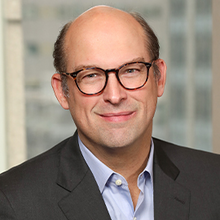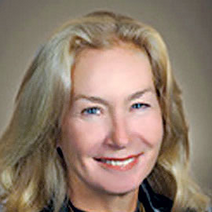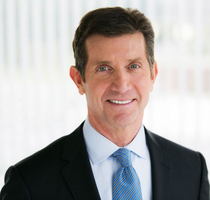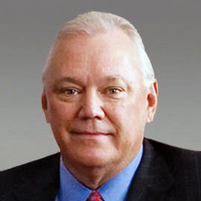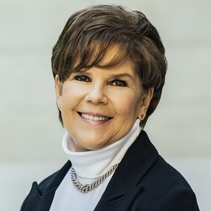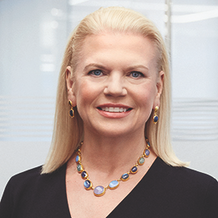JPMorgan Chase & Co.: Difference between revisions
(Most recent quarterly results detailed update) |
|||
| Line 682: | Line 682: | ||
==== Sensitivity Analysis ==== | ==== Sensitivity Analysis ==== | ||
A sensitivity analysis was conducted to determine the effect of the initial high growth rate, discount rate and terminal growth rate on the target value of the company. | A sensitivity analysis was conducted to determine the effect of the initial high growth rate, discount rate and terminal growth rate on the target value of the company. | ||
[[File:S1.png|S1.png]] | [[File:S1.png|S1.png]] | ||
Revision as of 22:02, 19 July 2023
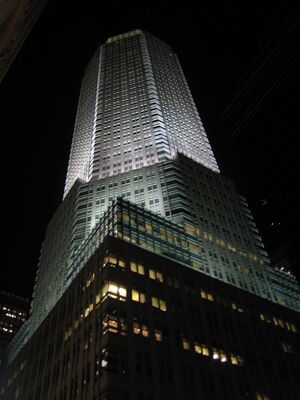 JPMorgan Chase headquarters at 383 Madison Avenue in New York City | |
| Type | Public |
|---|---|
| ISIN | US46625H1005 |
| Industry | Financial services |
| Predecessors |
|
| Founded | December 1, 2000 |
| Founders |
|
| Headquarters | 383 Madison Avenue New York City, U.S. |
Area served | Worldwide |
Key people |
|
| Products | |
| Revenue | |
| AUM | |
| Total assets | |
| Total equity | |
Number of employees | |
| Divisions |
|
| Subsidiaries | |
| Capital ratio | Tier 1 14.9% (2022) |
| Website | |
| Footnotes / references [2][3] | |
JPMorgan Chase & Co., a globally recognized financial services company, categorizes its operations into four key segments: Consumer & Community Banking (CCB), Corporate & Investment Bank (CIB), Commercial Banking (CB), and Asset & Wealth Management (AWM).
The CCB segment encompasses a broad spectrum of services from deposit, investment, lending, and payment solutions for individual consumers to a similar suite of services for small businesses. It also focuses on mortgage origination and servicing, residential mortgages, home equity loans, as well as credit card, auto loan, and leasing services.
In the CIB segment, the firm provides a range of investment banking services, such as advisory on corporate strategy and structure, equity and debt capital-raising, loan origination, and syndication. This segment also offers risk management solutions, prime brokerage, and research, along with securities services for asset managers, insurance companies, and public and private investment funds.
The CB segment addresses the financial needs of small to midsize businesses, local governments, and non-profits by offering financial solutions including lending, payments, investment banking, and asset management. Moreover, it extends commercial real estate banking services to investors, developers, and property owners across various sectors.
Finally, the AWM segment delivers multi-asset investment management solutions to institutional clients and retail investors. It offers a comprehensive range of products and services, including retirement plans, brokerage, custody, trusts, estates, loans, mortgages, deposits, and investment management products.
In addition to these key segments, JPMorgan Chase & Co. extends its services through ATM, online, mobile, and telephone banking facilities. With its inception dating back to 1799, the company is headquartered in the financial hub of New York, New York.
Operations
How did the idea of the company come about?
The idea of JPMorgan Chase stems from the cooperation of more than 1200 predecessor institutions over hundreds of years. In 1799, the earliest predecessor institution, The Manhattan Company, was charted by the New York State legislature to provide clean water to the city's growing residence. One of the founders, Aaron Burr, added a clause to the charter, to allow the directors of The Manhattan Company to start a bank with excess capital, that is unused by the water company. The service continued until 1842, when New York established its own municipal water system, leading to the closure of The Manhattan Company's waterworks operations.[4]
Meanwhile, the directors of The Manhattan Company, 6 months following the acceptance of the charter, formed The Bank of Manhattan Company. In 1955, The Bank of Manhattan Company merged with Chase National Bank, to form Chase Manhattan Bank, which combined Chase National’s strength in international, corporate, and correspondent banking with The Bank of The Manhattan Company's network of branches and retail banking expertise. In 1871, J. Pierpont Morgan united with Anthony Drexel to form Drexel, Morgan & Co., a private merchant banking house in New York City, renamed JPMorgan & Co later. In 2000, Chase Manhattan Bank merged with JPMorgan & Co. to form JPMorgan Chase & Co. and is now a multinational investment bank and financial services company.[4]
What is the mission of the company?
JPMorgan Chase aims to be the most respected financial services firm in the world, serving corporations and individuals in more than 100 countries.[5] In particular, the company is committed to accelerating the economy through business and community investments and policy advocacy through the following:[6]
- Business Growth & Entrepreneurship - Give business solutions, coaching, and mentoring to aid small businesses create jobs, grow and scale.[6] By investing $150 million over five years, they aim to expand opportunities for underserved entrepreneurs.[7]
- Career & Skills - Helping to improve and train the workforce of today, including 280,000+ employees globally, for future generations and jobs. [6] By investing $350 million over the next five years they aim to develop, test and scale innovative efforts that prepare individuals with the skills they need to be successful in a rapidly evolving economy.[8]
- Financial Health & Wealth Creation - JPMorgan Chase has already provided $125 million over five years to improve the financial health of those most in need.[6] They plan to further expand financial coaching programs and supporting their non-profit partners, to help more people achieve financial stability and meet their long-term financial goals.[9]
- Community Development - Aiming to foster strong communities through support of vital institutions and create access to affordable housing and homeownership.[6] By investing $400 million over 5 years, their aim is to focus on promoting housing stability and to improve housing affordability for Black, Latinx and other households of colour.[10]
- Environmental Sustainability: Aiming to drive climate action, clean energy and sustainable resource management, and help clients' finance and accelerate their transition to a low-carbon economy.[6] They want to promote sustainable development through the following:[11]
- Sustainable Solutions and Financing: Supporting clients and financing opportunities that advance the transition to a low-carbon economy and a more sustainable future.[11]
- Operational Sustainability: Minimising the environmental impact of their operations, including from their corporate buildings, retail bank branches and data centres.[11]
- Stakeholder and Policy Engagement: Engaging with stakeholders to identify and advance best practices and new opportunities.[11]
What are the main offerings of the company?
JPMorgan Chase & Co. provides a wide range of offerings to individuals, businesses, and institutional clients. Some of the main services and products offered by JPMorgan Chase & Co. are:
1. Consumer and Commercial Banking
Under the Chase brand, JPMorgan serve millions of people with a broad range of financial services, including personal banking, credit cards, mortgages, auto financing, investment advice, small business loans and payment processing.[12]
2. Retail Banking
JP Morgan offers various retail banking services, including checking and savings accounts, credit cards, mortgages, personal loans, and auto loans.
3. Investment Banking
JP Morgan provides investment banking services to corporations, governments, and institutional clients. This includes advising on mergers and acquisitions, capital raising through debt and equity offerings, underwriting securities, and providing financial restructuring services.
4. Asset Management
JP Morgan offers asset management services to institutional and individual investors. They provide investment solutions, portfolio management, and advisory services across various asset classes, including equities, fixed income, alternative investments, and multi-asset strategies.
5. Private Banking
JP Morgan provides comprehensive wealth management services to high-net-worth individuals and families. This includes investment management, estate planning, trust and fiduciary services, lending solutions, and customized financial advice.
6. Markets and Trading
JP Morgan has a strong presence in global markets and offers trading and sales services across various asset classes, including equities, fixed income, currencies, commodities, and derivatives. They serve institutional clients, corporations, and hedge funds.
7. Treasury Services
JP Morgan provides treasury and cash management solutions to corporate and financial institution clients. Their services include liquidity management, payment processing, cash flow forecasting, and risk management solutions.
8. Research and Insights
JP Morgan produces research reports, market analysis, and economic insights across different sectors and regions. This research helps clients make informed investment decisions and stay updated on market trends.
Market
Total Addressable Market
Total Addressable Market: Here, the total addressable market (TAM) is defined as the global financial services market, and based on a number of assumptions, it is estimated that the size of the market, in terms of revenue, is $28.1 trillion.[13]
Serviceable Available Market
Serviceable Available Market: Here, the serviceable available market (SAM) is defined as the global commercial banking market, and based on a number of assumptions, it is estimated that the size of the market, in terms of revenue, is $2.8 trillion.[14]
Serviceable Obtainable Market
Serviceable Obtainable Market: Here, the serviceable obtainable market (SOM) is defined as the US commercial banking market, and based on a number of assumptions, it is estimated that the size of the market, in terms of revenue, is $1.1 trillion.[15]
Competition
JPMorgan Chase and its subsidiaries and affiliates operate in highly competitive environments. Competitors include other banks, brokerage firms, investment banking companies, merchant banks, hedge funds, commodity trading companies, private equity firms, insurance companies, mutual fund companies, investment managers, credit card companies, mortgage banking companies, trust companies, securities processing companies, automobile financing companies, leasing companies, e-commerce and other internet-based companies, financial technology companies, and other companies engaged in providing similar as well as new products and services. The Firm’s businesses generally compete on the basis of the quality and variety of the Firm’s products and services, transaction execution, innovation, reputation and price. Competition also varies based on the types of clients, customers, industries and geographies served. With respect to some of its geographies and products, JPMorgan Chase competes globally; with respect to others, the Firm competes on a national or regional basis. New competitors in the financial services industry continue to emerge, including firms that offer products and services solely through the internet and non-financial companies that offer products and services that disintermediate traditional banking products and services offered by financial services firms such as JPMorgan Chase.[16]
Some competitors include:
- Bank of America
- Citigroup
- Goldman Sachs
- Wells Fargo
- Morgan Stanley
- HSBC
- Barclays
Team
Leadership
Chief Executive Officer
Jamie Dimon is the Chairman and CEO of JP Morgan - He became CEO in December 2005, and became Chairman in December 2006. He became COO and president of the joint company between Bank One and JP Morgan in July 2004. In March 2008, Dimon became a class A board member of the Federal Reserve Bank of New York. Dimon holds a BA in Psychology and Economics from Tufts University, and a MBA from Harvard Business School.[17]
Chief Financial Officer
Jeremy Barnum is the Chief Financial Officer of JP Morgan and joined the firm in 1994, having held several leadership roles including head of Global Research for JP Morgan's Corporate and Investment Bank, and CFO and Chief of Staff for the bank from 2013 to 2021. Barnum holds a degree in Chemistry from Harvard College.[17]
Chief Operating Officer
Daniel Pinto is the President and Chief Operating Officer of JP Morgan - He is also the CEO of its Corporate & Investment Bank. Pinto began as an analyst and foreign exchange trader at Manufacturers Hanover in 1983 and became head of sales for Chemical Bank in 1992. Pinto became global head of Emerging Markets in 2006, and then made co-head of Global Fixed Income for JP Morgan in 2009, before becoming the sole head in 2012. He became Co-President and COO in 2018, before becoming the sole President and COO in 2022. Pinto holds a degree in Public Accounting and Business Administration from Universidad Nacional de Lomas de Zamora.[17]
Board of Directors
James Dimon
For information about James Dimon, see "Chief Executive Officer" section above.
Linda B. Bammann
Linda B. Bammann was Deputy Head of Risk Management at JPMorgan Chase from 2004 until her retirement in 2005. Previously she was Executive Vice President and Chief Risk Management Officer at Bank One Corporation (“Bank One”) from 2001 to 2004 and, before then, Senior Managing Director of Banc One Capital Markets, Inc. Ms. Bammann graduated from Stanford University and received an M.A. degree in public policy from the University of Michigan.[17]
Stephen B. Burke
Stephen B. Burke is a Senior Advisor of Comcast Corporation. He was Chairman of NBCUniversal, LLC and NBCUniversal Media, LLC, one of the U.S.’s leading providers of entertainment, information and communication products and services, from 2011 until his retirement in 2020. He was Chief Executive Officer and President of NBCUniversal LLC and NBCUniversal Media, LLC from 2011 to 2019, Chief Operating Officer of Comcast Corporation from 2004 until 2011, and President of Comcast Cable Communications, Inc. from 1998 until 2010. Mr. Burke has been a director of Berkshire Hathaway Inc. since 2009. Mr. Burke graduated from Colgate University and received an M.B.A. from Harvard Business School.[17]
Todd A. Combs
Todd A. Combs is an investment officer at Berkshire Hathaway Inc., a holding company whose subsidiaries engage in a number of diverse business activities including finance, insurance and reinsurance, utilities and energy, freight rail transportation, manufacturing, retailing and services. He is also President and Chief Executive Officer of GEICO. Mr. Combs has served as a director of Berkshire Hathaway subsidiaries Precision Castparts Corp. since 2016, Charter Brokerage LLC since 2014 and Duracell Inc. since 2016. Mr. Combs graduated from Florida State University and received an M.B.A. from Columbia Business School.[17]
Alicia Boler Davis
Alicia Boler Davis has been the CEO of Alto Pharmacy, LLC since 2022. Prior to joining Alto, she served in leadership roles at Amazon.com, Inc., including Senior Vice President of Global Customer Fulfillment from 2021 to 2022 and member of the Senior Team (S-Team) from 2020 to 2022. Prior to her roles at Amazon, she spent nearly 25 years at General Motors where she became Executive Vice President of Global Manufacturing and Labor Relations in 2016. Ms. Davis graduated from Northwestern University, received a Master of Science and an Honorary Doctor of Engineering degree from Rensselaer Polytechnic Institute, and received an M.B.A. from Indiana University.[17]
Timothy P. Flynn
Timothy P. Flynn was Chairman of KPMG International, a global professional services organization providing audit, tax and advisory services, from 2007 until his retirement in 2011. From 2005 until 2010, he served as Chairman and from 2005 to 2008 as Chief Executive Officer of KPMG LLP in the U.S., the largest individual member firm of KPMG International. Mr. Flynn has been a director of United Health Group since 2017 and of Wal-Mart Stores, Inc. since 2012. He was a director of the Alcoa Corporation from 2016 to 2021 and of the Chubb Corporation from 2013 to 2016. Mr. Flynn graduated from The University of St. Thomas, St. Paul, Minnesota, and is a member of the school’s Board of Trustees.[17]
Alex Gorsky
Alex Gorsky retired from the Chairman and Chief Executive Officer roles at Johnson & Johnson in 2021 and then served as Executive Chairman during 2022. Mr. Gorsky currently sits on the boards of Apple, IBM, New York-Presbyterian Hospital and the Travis Manion Foundation, and serves on the Business Council and the Wharton School of the University of Pennsylvania Board of Advisors. He is also a former member of the Business Roundtable. Mr. Gorsky graduated from the United States Military Academy and received an M.B.A. from the Wharton School of the University of Pennsylvania.[17]
Mellody Hobson
Mellody Hobson has been the Co-CEO of Ariel Investments, LLC, an investment management firm, since 2019 and President and Director since 2000. She has also served as Chair of the Board of Trustees of the Ariel Investment Trust, a registered investment company advised by Ariel Investments, since 2006. Ms. Hobson works with a number of civic, non-profit and professional organizations, acting as a Director of the Chicago Public Education Fund; Chair of After School Matters, which provides Chicago teens with high quality out-of-school time programs; a member of the Executive Committee of the Investment Company Institute’s Board of Governors; Board member of the George Lucas Education Foundation; Vice Chair of World Business Chicago, and many other organizations. She is also a former Chair of the Economic Club of Chicago. Ms. Hobson graduated from the Woodrow Wilson School of International Relations and Public Policy at Princeton University.[17]
Michael A. Neal
Michael A. Neal was Vice Chairman of General Electric Company, a global industrial and financial services company, until his retirement in 2013 and was Chairman and Chief Executive Officer of GE Capital from 2007 until 2013. During his career at General Electric, Mr. Neal held several senior operating positions, including President and Chief Operating Officer of GE Capital and Chief Executive Officer of GE Commercial Finance prior to being appointed Chairman and Chief Executive Officer of GE Capital. Mr. Neal is a trustee of Georgia Institute of Technology’s GT Foundation. Mr. Neal graduated from the Georgia Institute of Technology.[17]
Phebe N. Novakovic
Phebe N. Novakovic has been the Chairman and Chief Executive Officer of General Dynamics since 2013. She was the President and Chief Operating Officer of General Dynamics in 2012, Executive Vice President of Marine Systems from 2010 to 2012, Senior Vice President of Planning and Development from 2005 to 2012, and Vice President from 2002 to 2005. Ms. Novakovic served as a director of Abbott Laboratories from 2010 to 2021. Ms. Novakovic graduated from Smith College and received an M.B.A. from University of Pennsylvania Wharton School.[17]
Virginia M. Rometty
Virginia M. Rometty retired from the President and Chief Executive Officer roles at IBM on April 6, 2020 and as Executive Chairman of the Board on December 31, 2020. She had been the Chairman, President and Chief Executive Officer of IBM since 2012. Mrs. Rometty is a member of the Business Roundtable, Council on Foreign Relations, Peterson Institute for International Economics. She is also a Trustee of Northwestern University and on the Board of Overseers and Managers of the Memorial Sloan-Kettering Cancer Center. She is also a former member of the President’s Export Council. Mrs. Rometty graduated from Northwestern University.[17]
Financials
Historic
Most recent quarter (2Q23)
In the 2nd quarter of 2023 (2Q23), JPMorgan Chase & Co have released a strong earnings report showing a net income of $14.5 billion, with profits soaring 67% compared to the previous year. This was largely due to the bank being a big lender, with their balance sheet boasting loans of $1.2T, up 10% since the previous quarter. The bank has therefore benefitted significantly as a result of the current economic climate with constant interest rate hikes and rising inflation increasing yields on loans. Another reason for the strong quarterly results was due to gains from the acquisition of First Republic, the failed bank that it had acquired in May 2023. [18]
- Managed revenue rose by 34% to $42.4 billion, beating analyst expectations of $38.4 billion.
- Deposits have gone up 3% compared to the previous quarter but are still down overall by 6% compared to the previous year.
- Common dividend paid out of $2.9B ($1.00 per share), with $1.8B of common stock net repurchases.
- Total assets under management for the Asset & Wealth Management division as of 2Q23 are $3.2 trillion, up 16%.
- In contrast, the revenue from investment banking (CIB) operations fell 6% in M&A and 10% in trading from the previous year. However, when looking across the sector for investment banking we see that this was less than competitor Citi bank which had losses of 24% and 13% respectively within the same divisions.[19] Furthermore, Goldman Sachs has reported a quarterly drop of 58% in profits compared to the previous year. [20]
In conclusion, we see that for 2Q23 JPMorgan Chase & Co has performed very strongly and continues to be a leading bank during a troubled macroeconomic climate.
Most recent year
For the fiscal year 2022, JP Morgan reported a net income of $35.89 billion. The annual revenue was $128.7 billion, an increase of 5.79% over the previous year.
All periods
Historic financials
| Year | 1 | 2 | 3 | 4 | 5 | 6 | 7 | 8 | 9 | 10 |
|---|---|---|---|---|---|---|---|---|---|---|
| Year end
date |
31/12/2013 | 31/12/2014 | 31/12/2015 | 31/12/2016 | 31/12/2017 | 31/12/2018 | 31/12/2019 | 31/12/2020 | 31/12/2021 | 31/12/2022 |
| Income Statement | ||||||||||
| Revenues
($'billion) |
97.37 | 95.11 | 93.54 | 96.57 | 100.71 | 108.78 | 115.72 | 119.95 | 121.65 | 128.7 |
| Net income
($'billion) |
16.56 | 20.08 | 22.65 | 22.83 | 22.57 | 30.71 | 34.64 | 27.41 | 46.5 | 35.89 |
| Balance Sheet | ||||||||||
| Total assets
($'billion) |
2416 | 2572 | 2351 | 2491 | 2534 | 2623 | 2687 | 3385 | 3744 | 3666 |
| Other | ||||||||||
| Employees
('000) |
251 | 241 | 235 | 243 | 253 | 256 | 257 | 255 | 271 | 294 |
Risk
The principal risk factors that could adversely affect JPMorgan Chase’s business, results of operations, financial condition, capital position, liquidity, competitive position or reputation include:
- Regulatory risks, including the impact that applicable laws, rules and regulations in the highly-regulated and supervised financial services industry, as well as changes to or in the application, interpretation or enforcement of those laws, rules and regulations, can have on JPMorgan Chase’s business and operations; the ways in which differences in financial services regulation in different jurisdictions or with respect to certain competitors can negatively impact JPMorgan Chase’s business; the penalties and collateral consequences, and higher compliance and operational costs, that JPMorgan Chase may incur when resolving a regulatory investigation; the ways in which less predictable legal and regulatory frameworks in certain countries can negatively impact JPMorgan Chase’s operations and financial results; and the losses that security holders will absorb if JPMorgan Chase were to enter into a resolution.[16]
- Political risks, including the potential negative effects on JPMorgan Chase’s businesses due to economic uncertainty or instability caused by political developments.[16]
- Market risks, including the effects that economic and market events and conditions, governmental policies, changes in interest rates and credit spreads, and market fluctuations can have on JPMorgan Chase’s consumer and wholesale businesses and its investment and market-making positions and on JPMorgan Chase’s earnings and its liquidity and capital levels.[16] Due to the high inflation rate, central banks of 28 counties has increased interest rates and planned to rise interest rate by the end of 2023 continuously. However, this will accompany more economic weakness, an increase in unemployment, market volatility, a decline in levels of risky assets, and a fall in inflation. This is a downside risk in the near term. [1] However, in long term, central banks will likely be forced to pivot and signal cutting interest rates sometime next year, which should result in a sustained recovery of asset prices and subsequently the economy by the end of 2023.
- Credit risks, including potential negative effects from adverse changes in the financial condition of clients, customers, counterparties, custodians and central counterparties; and the potential for losses due to declines in the value of collateral in stressed market conditions or from concentrations of credit and market risk.[16]
- Liquidity risks, including the risk that JPMorgan Chase’s liquidity could be impaired by market-wide illiquidity or disruption, unforeseen liquidity or capital requirements, the inability to sell assets, default by a significant market participant, unanticipated outflows of cash or collateral, or lack of market or customer confidence in JPMorgan Chase; the dependence of JPMorgan Chase & Co. on the cash flows of its subsidiaries; the adverse effects that any downgrade in any of JPMorgan Chase’s credit ratings may have on its liquidity and cost of funding; and potential negative impacts, including litigation risks, associated with the transition to alternative reference rates.[16]
- Capital risks, including the risk that any failure by or inability of JPMorgan Chase to maintain the required level and composition of capital, or unfavourable changes in applicable capital requirements, could limit JPMorgan Chase’s ability to distribute capital to shareholders or to support its business activities.[16]
- Operational risks, including risks associated with JPMorgan Chase’s dependence on its operational systems, its ability to maintain appropriately-staffed workforces and the competence, integrity, health and safety of its employees, as well as the systems and employees of third parties, market participants and service providers; the potential negative effects of failing to identify and address operational risks related to the introduction of or changes to products, services and delivery platforms; legal and regulatory risks related to safeguarding personal information; the harm that could be caused by a successful cyber attack affecting JPMorgan Chase or by other extraordinary events; risks associated with JPMorgan Chase’s risk management framework, its models and estimations and associated judgments used in its stress testing and financial statements, and controls over disclosure and financial reporting; and potential adverse effects of failing to comply with heightened regulatory and other standards for the oversight of vendors and other service providers.[16]
- Strategic risks, including the damage to JPMorgan Chase’s competitive standing and results that could occur if management fails to develop and execute effective business strategies; risks associated with the significant and increasing competition that JPMorgan Chase faces; and the potential adverse impacts of climate change on JPMorgan Chase’s business operations, clients and customers.[16]
- Conduct risks, including the negative impact that can result from the actions or misconduct of employees, including any failure of employees to conduct themselves in accordance with JPMorgan Chase’s expectations, policies and practices.[16]
- Reputation risks, including the potential adverse effects on JPMorgan Chase’s relationships with its clients, customers, shareholders, regulators and other stakeholders that could arise from employee misconduct, security breaches, inadequate risk management, compliance or operational failures, litigation and regulatory investigations, failure to satisfy expectations concerning environmental, social and governance concerns, failure to effectively manage conflicts of interest or to satisfy fiduciary obligations, or other factors that could damage JPMorgan Chase’s reputation.[16]
- Country risks, including potential impacts on JPMorgan Chase’s businesses from an outbreak or escalation of hostilities between countries or within a country or region; and the potential adverse effects of local economic, political, regulatory and social factors on JPMorgan Chase’s business and revenues in certain countries.[16]
- People risks, including the criticality of attracting and retaining qualified and diverse employees; and the potential adverse effects of unfavourable changes in immigration or travel policies on JPMorgan Chase’s workforce.[16]
- Legal risks, including those relating to litigation and regulatory and government investigations.[16]
Valuation
Comparable Company Analysis
Comparable company analysis derives metrics and ratios from financial statements and compare similar companies to determine the fair value of the company. The assumption for this is similar companies has similar valuation multiples, such as P/E ratio.
| Company | Share Price | Shares outstanding | Total debt | Minority Interest | Preferred stock | Total cash | Total Assets | Total liabilities | Total physical asset | Operating income | Depreciation & amortization | Net income | Preferred dividends | Weighted average number of common shares outstanding | Total shareholder's equity |
|---|---|---|---|---|---|---|---|---|---|---|---|---|---|---|---|
| JP Morgan Chase & Co. | 125.58 | 2.92B | 563.3B | 0 | 27.4 | 53.1B | 3.67T | 3.37T | 35.52B | 47.11B | 7.051B | $37.49 | 0 | 2.92B | 292.33B |
| Bank of America | 32.46 | 7.97B | 508.91B | 0 | 28.4 | 30.33B | 3.05T | 2.78T | 21.27B | 32.17B | 1.978B | 27.53 | 1.51B | 7.97B | 273.2B |
| Citi Group | 47.285 | 1.95B | 524.22B | 0.089B | 19 | 47.55B | 2.42T | 2.22T | 26.25B | 19.3B | 4.262B | $14.96 | 1.03B | 1.95B | 201.19B |
| Goldman Sachs | 333.71 | 0.33245B | 7.87B | 0 | 10.7 | 7.87B | 1.44T | 1.32T | 19.16B | 14.06B | 2.455B | 11.26 | 0.497B | 0.33245B | 117.19B |
| Wells Fargo | 42.045 | 3.75B | 230.48B | -0.3B | 19.45 | 34.6B | 1.9T | 1.72T | 17.98B | 65.38B | 6.832B | 13.18 | 1.12B | 3.75B | 179.89B |
| Morgan Stanley | 86.52 | 1.67B | 329.33B | 0.15B | 8.75 | 5.41B | 1.18T | 1.08T | 4.07B | 14.07B | 3.998B | 11.03 | 0 | 1.67B | 100.14B |
| HSBC | 40.47 | 3.96B | 300.28B | 0.52B | 0 | 277.91B | 2.47T | 2.32T | 8.62B | 16.79B | 3.873B | 12.03 | 0 | 3.96B | 139.44B |
| Barclays | 7.665 | 15.56B | 185.84B | 0.045B | 0 | 368.95B | 1.51T | 1.46T | 3.61B | 8.74B | 1.786B | 5.02 | 0 | 15.56B | 55.01B |
Share price: the average price of the minimum and maximum stock price (52 weeks period) | B = Billions, T = Trillions
Weighted average number of common shares outstanding: used the same value of shared outstanding for this because it is hard to find short term period(quarter) value for common shares outstanding
| Company | Market
Capitalization |
Enterprise
Value |
Book
value |
Liquidation
Value |
EBIT | EBITDA | EPS | Market value
per share |
P/E | EV/EBIT | EV/EBITDA | Debt to Equity | Return on Equity |
|---|---|---|---|---|---|---|---|---|---|---|---|---|---|
| JP Morgan Chase & Co. | 366.68B | 904.28B | 0.3T | -3.33448T | 47.11B | 54.161B | 12.84 | 125.58 | 9.78 | 19.20 | 16.70 | 11.53 | 0.13 |
| Bank of America | 258.71B | 765.69B | 0.27T | -2.75873T | 32.17B | 34.148B | 3.45 | 32.46 | 9.40 | 23.80 | 22.42 | 10.18 | 0.10 |
| Citi Group | 92.20575B | 587.96475B | 0.2T | -2.19375T | 19.3B | 23.562B | 7.67 | 47.29 | 6.16 | 30.46 | 24.95 | 11.034 | 0.07 |
| Goldman Sachs | 110.1243B | 120.8243B | 0.12T | -1.30084T | 14.06B | 16.515B | 33.87 | 333.71 | 9.85 | 8.59 | 7.32 | 11.26 | 0.096 |
| Wells Fargo | 157.66875B | 372.69875B | 0.18T | -1.70202T | 65.38B | 72.212B | 3.51 | 42.05 | 11.96 | 5.70 | 5.16 | 9.56 | 0.073 |
| Morgan Stanley | 144.4884B | 477.3084B | 0.1T | -1.07593T | 14.07B | 18.068B | 6.60 | 86.52 | 13.10 | 33.92 | 26.42 | 10.78 | 0.110 |
| HSBC | 160.2612B | 183.1512B | 0.15T | -2.31138T | 16.79B | 20.663B | 3.04 | 40.47 | 13.32 | 10.91 | 8.86 | 16.64 | 0.086 |
| Barclays | 119.2674B | -63.7976B | 0.05T | -1.45639T | 8.74B | 10.526B | 0.323 | 7.67 | 23.76 | -7.30 | -6.06 | 26.54 | 0.0912 |
Dividend Discount Model
The current stock price (as of closing of 06/07/2023) is 142.37. Using the H model, a target price of 180.68 is obtained, giving a 21% upside difference after 5 years. This model gave assumptions of 15% initial high growth rate (g1), 3% terminal growth rate (g2) and a 7% discount rate.
Advantages of using the H-model include:
1. Consistency
One of the benefits of using the H-model is the fact that dividends remain steady over a long period. Usually, a company will experience fluctuation in certain measures, such as its total earnings and cash flow.
However, it always tries to ensure that dividends are obtained from the cash flow that it expects to achieve every year. For that reason, most companies never set an unrealistically high dividend target because if they fail to achieve it, that can cause a fall in their share price.[21]
2. No bias
The main unit of measurement used in the H-model is the dividend. The good thing about that is that the definition of a dividend payment is the same for every company. However, the same cannot be said for many other measures. For example, what makes up “total earnings” may differ from one company to another.[21]
3. Sign of maturity
The fact that shareholders continue to receive dividends year after year is an indication that the company has reached peak maturity. It shows that its operations are stable, and not much turbulence is likely to be experienced in the future. Thus, from an assessment point, it is much easier to calculate the discount rate since the model eliminates risk.[21]
Other key assumptions made include:
1. Length of High-Growth Phase
The H model assumes a specific duration for the high-growth phase before transitioning to the stable growth phase. The duration of the high-growth phase should be determined based on the company's historical performance, future growth prospects, industry analysis, or management guidance.
2. Transition to Stable Growth
The H model assumes a smooth transition from the high-growth phase to the stable growth phase. This implies that the company will experience a gradual slowdown in growth rates without any significant disruptions or sudden changes in its operations or competitive landscape.
3. Dividend Stability
The H model assumes that the company will maintain a stable dividend pay-out policy during the stable growth phase. This assumes that the company has a consistent track record of paying dividends and is expected to continue doing so in the future.
4. Stability of Growth Rates
The H model assumes that the growth rates (g1 and g2) remain constant during their respective phases. However, in reality, growth rates can vary due to changes in the company's operating environment, industry dynamics, or specific factors impacting its performance. It's important to acknowledge this assumption and consider any potential risks or uncertainties that could affect the stability of growth rates.
Sensitivity Analysis
A sensitivity analysis was conducted to determine the effect of the initial high growth rate, discount rate and terminal growth rate on the target value of the company.
References and notes
- ↑
- ↑
- ↑
- ↑ 4.0 4.1 https://www.jpmorganchase.com/about/our-history
- ↑ https://www.jpmorgan.com/about-us
- ↑ 6.0 6.1 6.2 6.3 6.4 6.5 https://www.jpmorganchase.com/impact
- ↑ https://www.jpmorganchase.com/impact/our-approach/small-business-expansion
- ↑ https://www.jpmorganchase.com/impact/our-approach/jobs-and-skills
- ↑ https://www.jpmorganchase.com/impact/our-approach/financial-health
- ↑ https://www.jpmorganchase.com/impact/our-approach/neighborhood-development
- ↑ 11.0 11.1 11.2 11.3 https://www.jpmorganchase.com/impact/sustainability
- ↑ https://www.chase.com/digital/resources/about-chase#:~:text=We're%20proud%20to%20serve,business%20loans%20and%20payment%20processing.
- ↑ https://www.thebusinessresearchcompany.com/report/financial-services-global-market-report
- ↑ https://www.ibisworld.com/global/market-size/global-commercial-banks/
- ↑ https://www.ibisworld.com/industry-statistics/market-size/commercial-banking-united-states/
- ↑ 16.00 16.01 16.02 16.03 16.04 16.05 16.06 16.07 16.08 16.09 16.10 16.11 16.12 16.13 https://jpmorganchaseco.gcs-web.com/node/525601/html#i71fd3be39cff46d4bfa090c3713c3fa2_34
- ↑ 17.00 17.01 17.02 17.03 17.04 17.05 17.06 17.07 17.08 17.09 17.10 17.11 17.12 https://www.jpmorganchase.com/about/our-leadership
- ↑ https://www.jpmorganchase.com/ir/quarterly-earnings
- ↑ https://www.citigroup.com/global/investors/quarterly-earnings
- ↑ https://www.goldmansachs.com/media-relations/press-releases/2023/2023-07-19-q2-results.html
- ↑ 21.0 21.1 21.2 https://corporatefinanceinstitute.com/resources/valuation/h-model/

